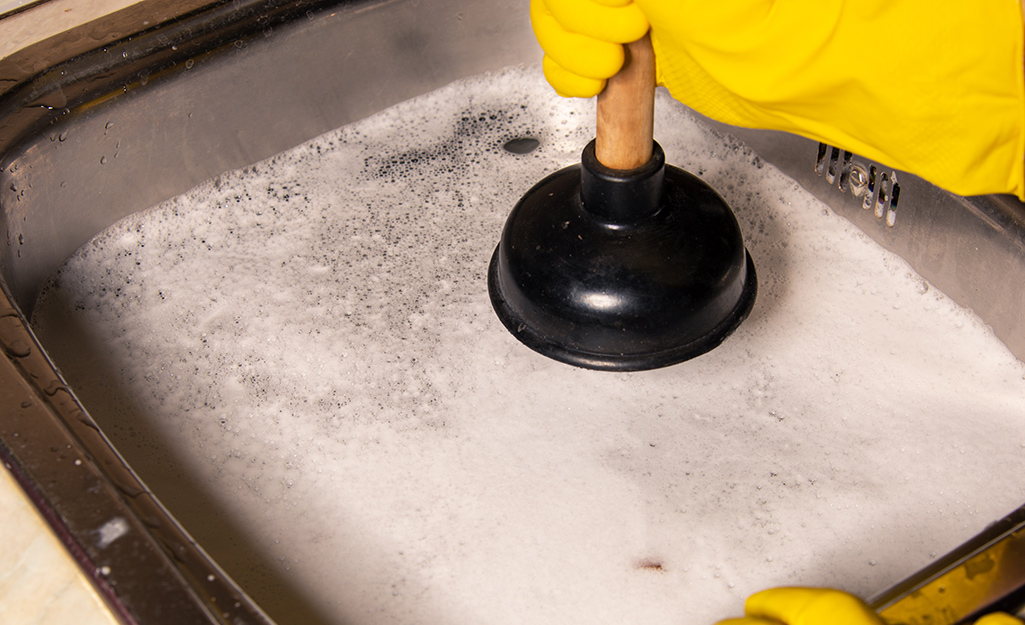Just how do you really feel in relation to A Guide to Plungers (and How to Use Them)?

Intro
Appropriate upkeep of home drains is necessary for avoiding obstructions and making certain smooth water flow. One of the secret devices in every home owner's toolkit is the bettor, alongside various drainpipe cleaners designed to tackle persistent blockages effectively. This post explores exactly how to utilize bettors and drain cleaners effectively to maintain your drains streaming easily.
Area 1: Recognizing Bettors
Kinds of Plungers
There are a number of types of bettors readily available, each made for various kinds of drains pipes and clogs. The most typical kinds include cup plungers, flange bettors, and accordion plungers.
Exactly How Plungers Job
Bettors deal with the concept of creating stress and suction to displace blockages. When effectively used over a drainpipe, they produce a vacuum cleaner that can take out particles or separate clogs.
Selecting the Right Plunger
Selecting the right plunger depends on the type of drainpipe and the nature of the clog. Cup bettors are suitable for sinks and tubs, while flange plungers are much better fit for bathrooms due to their design.
Typical Mistakes with Bettors
Preventing these mistakes makes certain efficient plunging: improper seal around the drain, not enough force, and not clearing surrounding debris.
Area 2: Utilizing Plungers Successfully
Preparation
Before plunging, ensure the bettor covers the drain entirely and develops a tight seal. Clear any type of visible debris around the drainpipe opening.
Strategy
Begin with gentle plunging motions to construct suction. Increase stress gradually, utilizing a consistent rhythm. Repeat as required up until the drainpipe gets rid of.
Troubleshooting Tips
If plunging doesn't function, attempt adjusting the seal, using oil jelly for a better seal, or making use of a different type of plunger.
Area 3: Understanding Drain Cleansers
Sorts Of Drainpipe Cleaning Company
Drain pipes cleaners can be chemical or chemical. Chemical cleansers utilize strong chemicals to liquify clogs, while chemical cleansers utilize natural enzymes to break down organic matter.
How Drainpipe Cleaning Company Work
Chemical cleansers respond with obstructions to dissolve them, while chemical cleansers break down natural products like hair and oil without hurting pipelines.
Safety Considerations
Constantly use handwear covers and eye protection when utilizing chemical drain cleaners. Guarantee ample ventilation and follow supplier directions carefully.
Eco-Friendly Alternatives
Consider using vinegar and baking soda or enzyme-based cleaners for eco-friendly choices that are more secure for pipes and the setting.
Area 4: Using Drain Cleaners Successfully
Application Methods
Put chemical cleaners straight right into the drainpipe opening. Permit them to help the advised time prior to purging with warm water. Enzymatic cleaners need to sit over night.
Preventative measures
Avoid mixing various sorts of cleaners, as this can produce hazardous fumes. Never utilize chemical cleaners combined with a plunger, as splashing can take place.
Managing Stubborn Clogs
For persistent blockages, take into consideration using a plumbing snake or calling an expert plumbing technician to prevent damage to pipelines.
Verdict
Finally, understanding how to use bettors and drain cleansers successfully is important for maintaining healthy and balanced pipes systems. By choosing the right devices and methods, homeowners can tackle small clogs and avoid major pipes issues down the line.
How to Use a Plunger to Unclog a Drain
The humble plunger is a simple yet effective tool for breaking clogs in sinks, tubs and toilets. This handy tool is easy to use. You can make the most of its power if you understand how it works. Ready to dive in? Here’s what you need to know.
Safety First!
Never use a plunger with drain chemicals. Water will splash as you work, and the chemicals can spatter, burning skin and eyes. It’s a good idea to use rubber gloves and wear safety goggles when you work on a clog.
Choose the Right Tool for the Job
Plungers come in two different styles. Sinks, bathtubs and showers require a cup plunger. Like its name suggests, the rubber end is shaped like a cup. Use a flange plunger on toilets. These plungers have a rubber funnel extending from the cup. A plunger needs to be big enough to cover the drain.
Ready, Set, Plunge!
- Coat the rim: Coat the plunger rim with petroleum jelly. This helps make a better seal.
- Block outlets: Hold a wet rag over nearby outlets such as the overflow vent or the drain in a second sink.
- Release air: Insert the plunger at an angle into the water. Water will displace air in the cup. A water-filled cup is more forceful than one filled with air.
- Keep the plunger upright: Hold the plunger perpendicular to the drain. Use fast, forceful strokes, but make the first stroke gentle. The first stroke can create a splash if the cup still contains air. Thrust the plunger 15 to 20 times.
- Snap off the plunger: The final stroke should be a strong upward motion that ends when the plunger snaps off the drain.
- Repeat the process: you may need to repeat this sequence several times. When the water drains away, your work is done. High-five!
https://plumbernw.com/blog/how-to-use-a-plunger-to-unclog-a-drain/

Do you like reading up on Here's How to Correctly Use a Toilet Plunger? Make a remark directly below. We'd be pleased to hear your reactions about this blog post. In hopes that you come back again before long. Sharing is good. One never knows, you may be helping someone out. Thanks a lot for going through it.
Set Up An Appointment
Comments on “Discover Plunger and Drain Cleaner: Effective Practices”